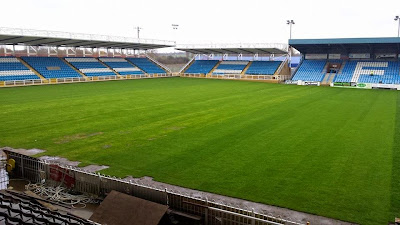Terry Hudson’s time at Featherstone was divided into two separate parts. It began with a battle for the scrum-half berth with a young Steve Nash and finished with a similar tussle with a young Deryck Fox, two highly-decorated, worthy rivals and team-mates. Tex made his Rovers debut in April 1969, immediately endearing himself to fans by scoring a match-winning try against Castleford. Such was the quality and consistency of Nash’s play that it was to be August 1970 before Hudson got an extended run in the team following a knee ligament injury to Nash. Once fit again, Nash slotted back into the first team, now coached by Peter Fox.
As a keen young half-back, once he had been given the taste of the action, Terry Hudson was hungry for more. The only solution was a transfer and Rovers received a sizeable £7,500 from Hull KR for his services in 1971. Hudson followed in a long line of very good scrum-halves forced by the sheer volume of available talent to leave the club to find first team football. After four years at Craven Park, he moved on to Wakefield, but after Rovers’ relegation in 1979, Paul Daley called Tex back home in September 1979. He helped Rovers to the Second Division title and back into the top flight.
As a keen young half-back, once he had been given the taste of the action, Terry Hudson was hungry for more. The only solution was a transfer and Rovers received a sizeable £7,500 from Hull KR for his services in 1971. Hudson followed in a long line of very good scrum-halves forced by the sheer volume of available talent to leave the club to find first team football. After four years at Craven Park, he moved on to Wakefield, but after Rovers’ relegation in 1979, Paul Daley called Tex back home in September 1979. He helped Rovers to the Second Division title and back into the top flight.
Always keen and committed on defence, he had an eye for the long cut-out pass, and was a hard worker on the field, marshalling the troops. He was appointed club captain in 1982. At this point Rovers splashed out good money on Batley scrum-half Neil Pickerill and Hudson was switched to loose forward where he continued to oversee operations. Pickerill never settled and as Rovers famous Cup-winning run started in February 1983 Hudson was back at number seven and revelling in Rovers’ Cup success. Man of the match in the semi-final, Hudson played a pivotal role in the final. His planned move sent Hobbs over for the only first-half try, and a typical all-action display (with a ten minute sin-bin visit included) really disrupted the Hull team. Job done, a few pleasantries exchanged with Joe Gormley, and then Tex Hudson had his hands on the Challenge Cup at Wembley!
The arrival of Deryck Fox saw Terry switch back to loose forward the following season and after 218 first team games he left Rovers for a second time in November 1984 to play out his days at Hunslet. It was not the end of his involvement at Rovers for during the reign of Australian coach Steve martin, Terry Hudson was his able and well-respected assistant.


